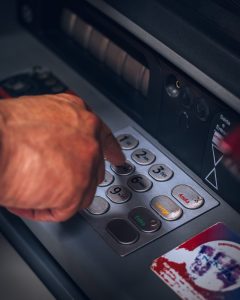Forex trading is a complex and dynamic market that requires constant monitoring and analysis. With the advent of artificial intelligence (AI) and machine learning, it has become increasingly possible to develop algorithms that can predict market trends and make profitable trades. In this article, we will discuss how to make an AI algorithm for forex trading.
1. Define the Problem
The first step in developing an AI algorithm for forex trading is to define the problem. What are you trying to achieve? Are you looking to predict market trends, identify profitable trades, or automate your trading strategy? Once you have a clear understanding of the problem you are trying to solve, you can begin to develop a strategy for your AI algorithm.
2. Collect Data
The next step is to collect data. This is perhaps the most important step in developing an AI algorithm, as the quality and quantity of data you collect will directly impact the accuracy and reliability of your algorithm. You will need to gather historical data on currency pairs, including price movements, volume, and other relevant indicators. You can obtain this data from forex brokers, financial publications, and other sources.
3. Clean and Prepare the Data
Once you have collected your data, you will need to clean and prepare it for analysis. This involves removing any errors or inconsistencies in the data, filling in missing values, and converting the data into a format that can be used by your AI algorithm. This step can be time-consuming, but it is essential to ensure the accuracy and reliability of your algorithm.
4. Develop Your AI Algorithm
Once your data has been cleaned and prepared, you can begin to develop your AI algorithm. There are several different approaches you can take when developing an AI algorithm for forex trading, including neural networks, support vector machines, and decision trees. Each approach has its advantages and disadvantages, so it is important to choose the one that is best suited to your needs.
5. Train Your Algorithm
Once you have developed your AI algorithm, you will need to train it using your historical data. This involves feeding your algorithm with data from past market trends and trades, allowing it to learn from this data and develop a predictive model. This process can take some time, as your algorithm will need to process and analyze large amounts of data.
6. Test Your Algorithm
Once your algorithm has been trained, you will need to test it to ensure that it is accurate and reliable. This involves using your algorithm to predict market trends and trades, and comparing its predictions to actual market data. This step is essential to ensure that your algorithm is effective and can be used for real-world trading.
7. Refine and Improve Your Algorithm
Finally, you will need to refine and improve your algorithm. This involves analyzing its performance, identifying any weaknesses or areas for improvement, and making adjustments to improve its accuracy and reliability. This is an ongoing process, as the forex market is constantly changing and evolving, and your algorithm will need to be updated to reflect these changes.
In conclusion, developing an AI algorithm for forex trading requires a significant amount of time, effort, and expertise. However, if done correctly, it can be a powerful tool for predicting market trends and making profitable trades. By following these steps, you can develop an effective and reliable AI algorithm for forex trading.





